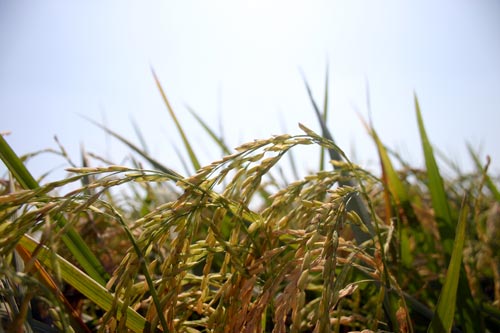
Drift this year’s toughest issue
The bulk of the drift complaints on rice continue to be glyphosate and Newpath. However, more Gramoxone is being used now and also more Ignite due to the glyphosate-resistance issues. Gramoxone and Ignite usually result in more cosmetic injury than glyphosate and Newpath. However, they can be abused as well.
June 2, 2011

The tougher weed control calls are beginning to come in, but the toughest issues I have to deal with in the field continue to be drift issues. Of course, I never get any calls to go look at pretty fields. I seldom even get called to go look at fields for the purposes of making recommendations.
Most of my weed control calls are from consultants and dealer field reps and the questions can be dealt with on the telephone. Most of my field visits are for the purpose of diagnosing problems.
I can not believe a lot of the drift problems I see. Some are honest mistakes. I have made them, too. Most I see, however, are just due to misjudgment or blatant disregard.
The bulk of the drift complaints on rice continue to be glyphosate and Newpath. However, more Gramoxone is being used now and also more Ignite due to the glyphosate-resistance issues. Gramoxone and Ignite usually result in more cosmetic injury than glyphosate and Newpath. However, they can be abused as well.
The addition of a photosynthetic inhibitor herbicide such as atrazine, Sencor, or other metribuzin-containing product, Cotoran, diuron, etc., to Gramoxone makes it a much better burn-down product because they slow it down and allow for some translocation. This also makes the drift much more injurious to rice and other susceptible crops.
I am aware of a 350-acre rice replant due to Gramoxone-plus-Cotoran drift this spring. I have also seen some pretty tough-looking rice where Ignite plus Valor was blown right across it.
In almost every situation I look at, the drift problem could have been prevented if the application had not been made with a wind blowing toward the susceptible crop.
I look at a lot of drift that just appears due to blatant disregard. I look at a lot where the applicator knew the wind was blowing, but he honestly just “did not think it would go that far.”
I have heard a lot of folks comment this year that “flag the technology” should be mandatory. I think that would help some. I personally think the flags are too small. I would be painting up some levee tarps or something.
I do not like what I see happening in the field now, but I have an even bigger concern. We are not getting any new herbicides and, especially, herbicide modes of action. The new technology on the forefront is going to be in stacked or multiple herbicide tolerance traits.
With the exception of rice in the mix, everyone has been spoiled by all of our Roundup Ready crops. We have LibertyLink soybeans and cotton now and several companies are working different stacks. It is unlikely that any of these will be good enough to dominate the market like Roundup Ready did and we do not need one to dominate. That is why glyphosate is not working in many situations now.
I believe we will see a rapid increase in intercropping of different technologies. The foreseeable future of weed control will either be in traits or hoeing. Some of the newest traits to hit the market will likely be dicamba tolerance and 2,4-D tolerance. Both are herbicides that can affect susceptible plants in minute doses. Soybeans are extremely susceptible to dicamba and cotton is extremely susceptible to 2,4-D.
The companies are working hard to come up with “safer” formulations. Hopefully that will help, but it will not change the tolerance level of the susceptible crops. My concern is if what we are seeing with drift in the field right now is “real world,” then we have not seen anything yet. If we can not somehow figure out a way to keep the herbicides we are using now on the target, some of these new technologies we need could be flaming disasters the first year out.
My comments are out of concern rather than criticism. I realize the answers are not easy. I have lost track of how many years I have said this one is the windiest, but this one has been. I realize it is hard to get everything done when you can not spray when the wind is blowing. However, we simply must find a way to do better.
About the Author(s)
You May Also Like



